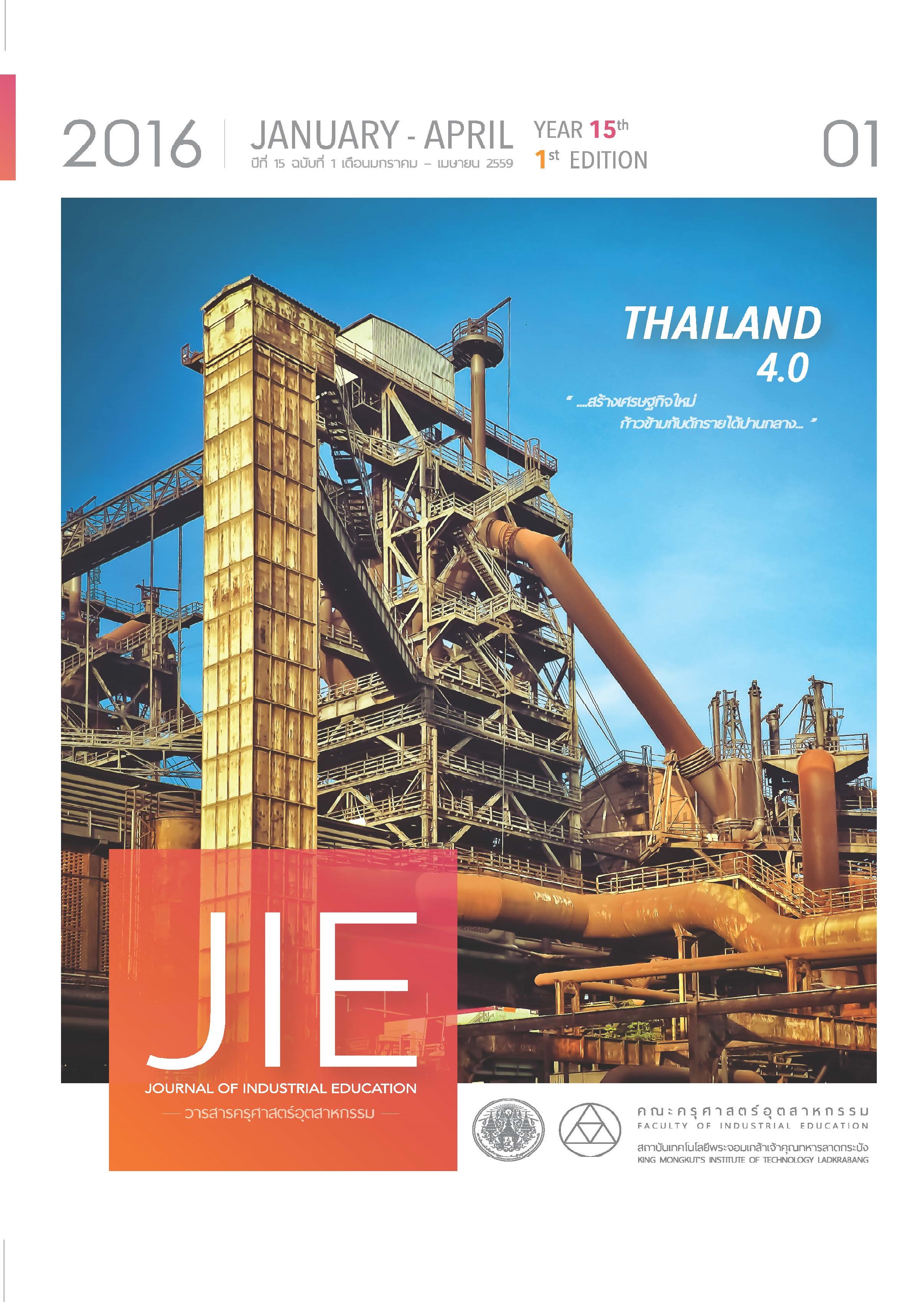DEVELOPMENT OF ACHIEVEMENT AND MATHEMATICAL SKILLS USING BLENDED LEARNING FOR PRATHOMSUKSA II STUDENTS
Keywords:
blended learning, computer-assisted, Video, Mathematical Solution Analysis, achievement test and Mathematical SkillsAbstract
The objectives of this study to compare achievement and Mathematical Skills between Prathomsuksa II students learning with Blended Learning and traditional method for Mathematical Solution Analysis at Klong Na Kluea Noi School’s elementary school, Prathomsuksa II students. Samples were 40 Prathomsuksa II students selected by cluster sampling and divided into two groups, including 20 persons per group. Duration of study took 5 weeks. The research tools were consisted of 1) Blended Learning lesson plan in Mathematical Solution Analysis 2) Traditional method lesson plan in Mathematical Solution Analysis 3) computer-assisted instruction on Mathematical Solution Analysis courseware, evaluation forms on content and technique, 4) achievement test on knowledge and practices with content validity level (I.O.C.) equal to 1.00, difficulty level between 0.70-0.80, discrimination level between 0.20-0.50, reliability level was 0.79, and independent t-test was used for data analysis.
The results of the study were as follows,
1) Achievement of students learning with Blended Learning in Mathematical Solution Analysis was significantly higher than those who learning with traditional method at .05 level which was consistent to hypothesis.
2) Mathematical Skills of students learning with Blended Learning in Mathematical Solution Analysis was significantly higher than those who learning with traditional method at .05 level which was consistent tohypothesis.
References
Prapan, P.,2007. Presentation formats Blended learning with learning together on a science project for training solutions mathayomsuksa1 . Thesis in Master of Science Degree in Science Education , chulalongkorn University.
[2] อาภรณ์ ใจเที่ยง. 2540. หลักการสอนคณิตศาสตร์. (พิมพ์ครั้งที่2). กรุงเทพมหานคร: โอเดียนสโตร์.
[3] Seels, B.,&Glasgow,Z.1998. Making Instructional Design Decisions. 2nd ed. Upper Saddle River. NJ: Merrill
[4] Carman, E. 2002. “Leadership for the effective and productiveschool.Springfield”, IL: Charles C Thomas publisher.
[5] ล้วน สายยศ และอังคณา สายยศ. สถิติวิทยาทางการวิจัย.กรุงเทพฯ : สุวีริยาสาส์น, 2540.
[7] อภิชาติ อนุกูลเวช. 2553. ทฤษฎีทางการศึกษา. [Online]Available:https://www.chontech.ac.th/~abhichat/Edu_Theory/Edu_McClelland.htm.
[8] ศิริรัตน์ เพ็ชร์แสงศรี. 2555. บทความปริทัศน์ การเรียนแบบผสมผสานและการประยุกต์ใช้Blended Learning and Its Applications.วารสารครุศาสตร์อุตสาหกรรม, 11(1), น.1-5.
Sirirat, P.2012. Review article Blended Learning And the application of Blended Learning and Its Applications. Journal of Industrial Education. 11 ( 1 ) , p. 1-5.
[9] Merritt, Paul F. ;et al. (1992) . Computers in Education. 2 nd ed. U.S.A. : Allyn and Bacon.
[10] กรมวิชาการ. 2545. การวิจัยเพื่อการพัฒนาการเรียนรู้ตามหลักสูตรการศึกษาขั้นพื้นฐาน. กรุงเทพฯ: องค์การรับส่งสินค้าและครุภัณฑ์.
[11] Carpenter, T. 1999. Teaching and learning mathematicswithunderstanding.Mahwah, NJ: Lawrence Erlbaum Associates.
Downloads
Published
How to Cite
Issue
Section
License
"The opinions and contents including the words in papers are responsibility by the authors."
"ข้อคิดเห็น เนื้อหา รวมทั้งการใช้ภาษาในบทความถือเป็นความรับผิดชอบของผู้เขียน"



